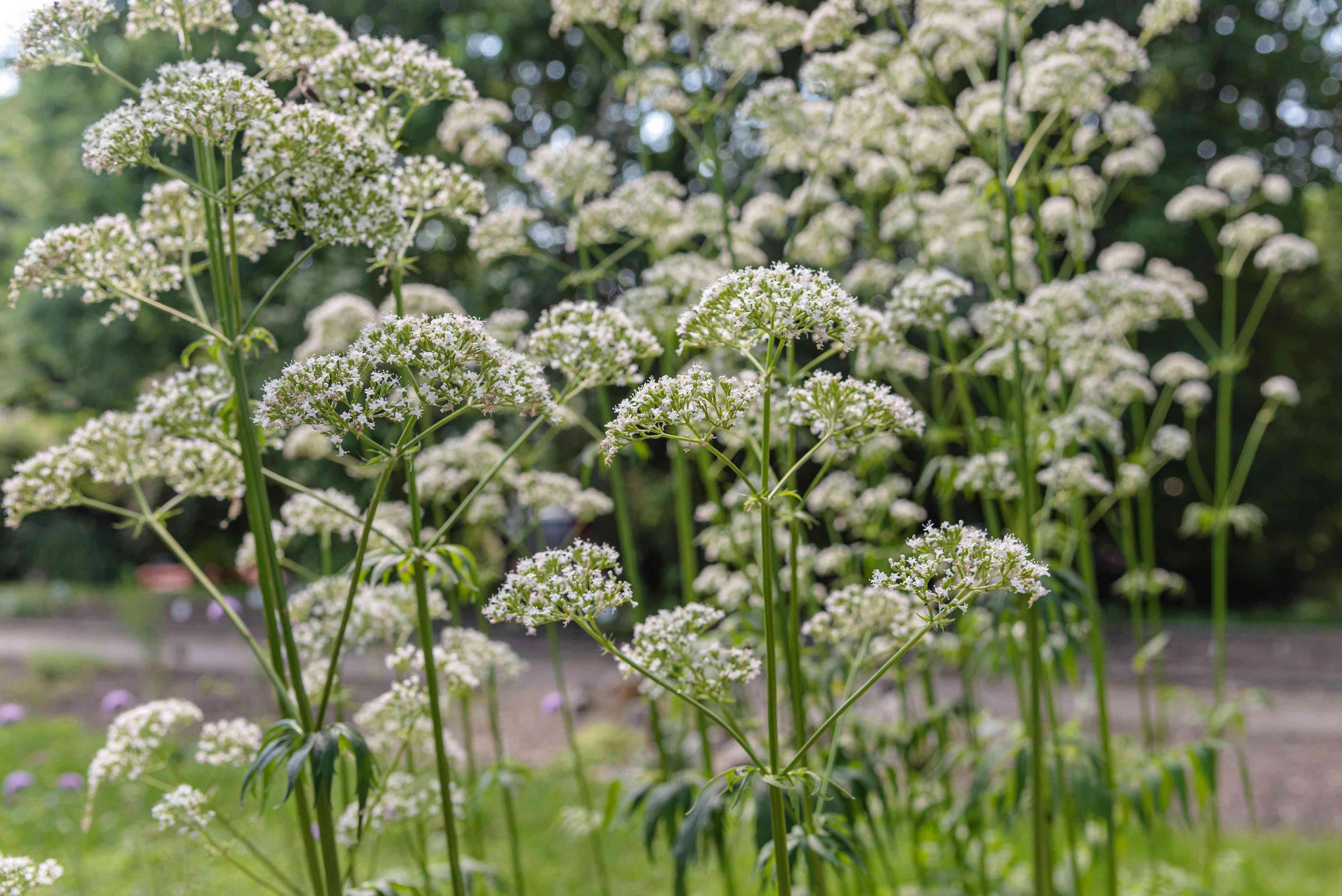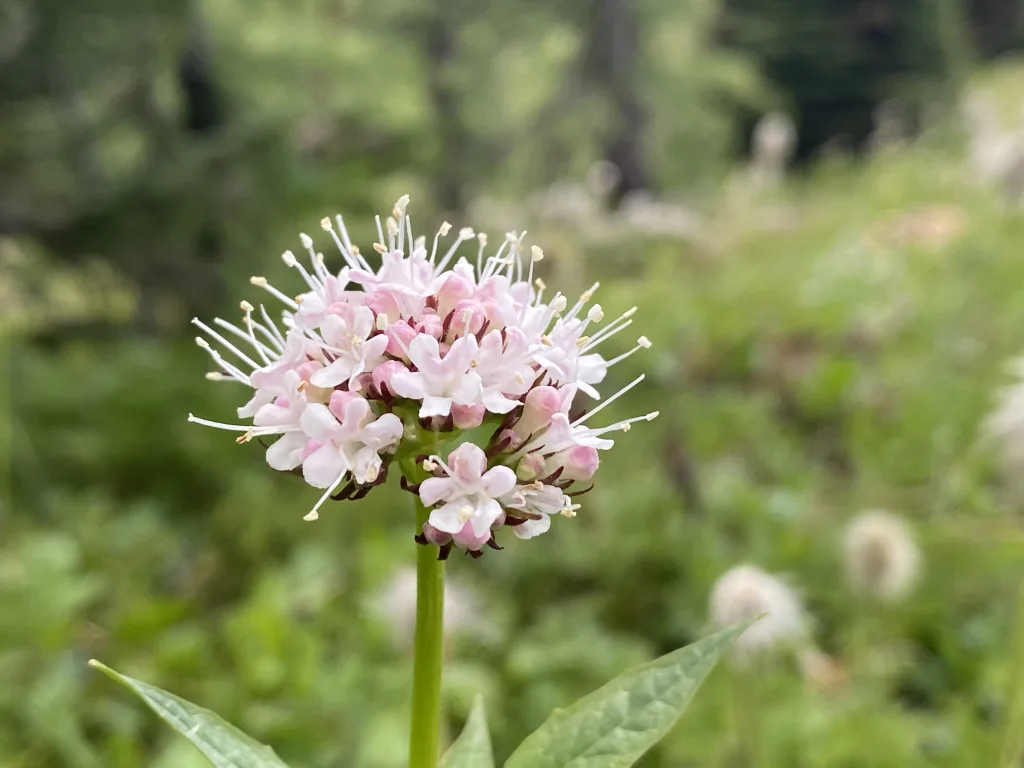Valerian, scientifically known as Valeriana officinalis, is a perennial herb that has gained popularity for its medicinal uses. Native to Europe and Asia, this herb has been widely cultivated and naturalized in various parts of the world, including North America. Valerian is known for its beautiful clusters of pink or white flowers and its aromatic roots, which are used in herbal medicine.
When it comes to growing valerian, it is important to understand its preferred growing conditions. This herb thrives in sunny wetlands and roadsides, making it well-suited for moist environments. However, valerian is a versatile plant and can adapt to a wide range of growing conditions. It can tolerate both full sun and partial shade, making it suitable for various garden settings.
In terms of soil requirements, valerian is not too fussy. It can grow in any well-draining soil, although it does prefer to be kept moist. Therefore, regular watering is necessary to ensure the plant’s health and growth. To help retain moisture, it is advisable to cover the soil around the plant with mulch. This will not only preserve soil moisture but also inhibit weed growth.
Valerian is known for its vigorous growth and can reach a height of up to 5 feet when in full bloom. Therefore, it is important to consider its potential size when planning its placement in a garden. It is often recommended to plant valerian behind smaller plants, allowing it to grow upwards without obstructing sunlight from reaching neighboring plants.
When it comes to companion planting, valerian pairs well with low, mound-forming herbs like thyme and oregano. Its tall stature can provide a beautiful backdrop for shorter plants, creating an aesthetically pleasing garden. Additionally, valerian is known to harmonize well with other herbs such as echinacea, catnip, and dill.
Valerian is a versatile herb that can thrive in a variety of growing conditions. It prefers moist environments but can adapt to different light levels and soil types. When planning its placement in a garden, it is important to consider its potential height and to plant it behind smaller plants. Valerian’s compatibility with other herbs makes it a great addition to herb gardens and mixed plantings. With proper care and attention, valerian can be a beautiful and beneficial addition to any garden.
Where Does Valerian Grow In The US?
Valerian (Valeriana officinalis) is a plant species that can be found growing in various regions across the United States. It is a perennial plant, meaning it lives for more than two years, and it is known for its invasive characteristics.
Valerian is particularly abundant in sunny wetlands and roadsides. It has a tendency to thrive in moist, fertile soil, which explains its frequent presence in wetland areas. The plant is not native to the United States, but it has been introduced and has become naturalized in many regions.
One area where valerian is particularly common is around the city of Bergland in Ontonagon County, Michigan. In this region, valerian has established dense infestations that can quickly overtake native vegetation. This poses a threat to the local ecosystem as it can displace native plants and harm wildlife habitat.
To summarize, valerian is a non-native invasive plant that grows in sunny wetlands and roadsides across the United States. It is particularly abundant in the city of Bergland in Ontonagon County, Michigan, where it forms dense infestations that can negatively impact the local environment.

Does Valerian Need Full Sun?
Valerian is a versatile herb that can thrive in a range of lighting conditions. While it can tolerate full sun, it is not a strict requirement for the plant’s growth. Valerian will also do well in partial shade, making it suitable for various garden settings. This adaptability makes valerian a great choice for gardens that have both sunny and shaded areas.
However, it is important to note that valerian does prefer to be kept moist, regardless of the amount of sunlight it receives. This means that even in partial shade, the soil should be consistently moist to ensure optimal growth. Regular watering is necessary to meet the plant’s moisture requirements.
To enhance moisture retention, it is advisable to cover the soil around the valerian plant with a layer of mulch. This will help prevent excessive evaporation and maintain a more stable moisture level in the soil. Mulching also assists in weed suppression, which can be beneficial for valerian’s growth.
While valerian can tolerate full sun, it is not a strict necessity. It will also thrive in partial shade, as long as the soil is kept consistently moist. Adding mulch around the plant can help retain moisture and promote healthy growth.
How High Does Valerian Grow?
Valerian, scientifically known as Valeriana officinalis, is a perennial flowering plant that can reach a height of 1.5 meters or 5 feet when it is fully grown and in bloom. This plant is often cultivated alongside low-growing, mound-forming herbs and flowers to create a visually appealing garden landscape. Valerian’s tall stature adds vertical interest to the garden, complementing the shorter plants that surround it.
Valerian can grow up to a height of 1.5 meters (5 feet) when it is in full bloom, making it a striking addition to any garden or landscape.
What Grows Well With Valerian?
Valerian, a tall plant that can reach up to 5 feet in height, thrives when planted alongside certain companion plants. Here are some herbs and plants that grow well with valerian:
1. Thyme: This low, mounded herb complements valerian nicely. Plant thyme in front of valerian to create an attractive arrangement.
2. Oregano: Similar to thyme, oregano is a low-growing herb that pairs well with valerian. Plant it in front of valerian to create a layered effect.
3. Echinacea: Valerian and echinacea make a great combination. Both plants have similar growth habits and can be planted side by side.
4. Catnip: Valerian and catnip are both members of the mint family, so they share similar growth requirements. Plant catnip next to valerian to create a visually pleasing display.
5. Dill: Valerian and dill can be grown together, as they have different heights. Plant dill in front of valerian to avoid shading it from the sun.
Remember to consider the height of valerian when choosing companion plants. Place taller plants like valerian behind smaller plants to ensure they receive adequate sunlight. By selecting the right companion plants, you can create a beautiful and harmonious garden.

Conclusion
Valerian (Valeriana officinalis) is a non-native invasive plant that poses a threat to native vegetation and wildlife habitat in sunny wetlands and roadsides. It has become particularly abundant around the city of Bergland in Ontonagon County, Michigan.
Valerian is a hardy perennial that can thrive in various conditions, including full sun to partial shade and well-draining soil. However, it does require regular watering and benefits from being mulched to retain moisture.
When fully grown, Valerian can reach heights of up to 5 feet, making it important to plant it behind smaller plants to avoid blocking sunlight. It pairs well with low, mound-forming herbs such as thyme and oregano, as well as companion plants like echinacea, catnip, and dill.
As a responsible gardener or land manager, it is crucial to be aware of the invasive nature of Valerian and take necessary measures to control its spread. This includes regularly monitoring and removing Valerian plants to prevent them from forming dense infestations that can harm native ecosystems.
By understanding the characteristics and needs of Valerian, we can make informed decisions about its cultivation and management, ensuring the preservation of our natural habitats and the well-being of our wildlife.
